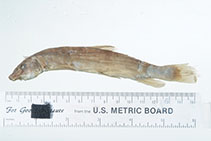| Family: |
Catostomidae (Suckers), subfamily: Catostominae |
| Max. size: |
25 cm TL (male/unsexed); max. reported age: 9 years |
| Environment: |
demersal; freshwater |
| Distribution: |
North America: Canada and USA from Saskatchewan River system and Fraser River drainage south through upper Missouri and Colorado River drainages to Colorado and Utah; Lahontan basin in the USA; upper Sacramento River system in California and through Oregon and Washington to southern British Columbia. |
| Diagnosis: |
|
| Biology: |
Occurs in various habitats, but most common in rocky riffles and runs of clear mountain creeks and small to medium rivers. Rarely found in lakes (Ref. 1998). Feeds on diatoms, other algae, higher plants, dipterous larvae and pupae (Ref. 1998). Spawning adults may be preyed upon by birds and mammals while small individuals may be preyed upon by stream salmonids (Ref. 1998). Edible. |
| IUCN Red List Status: |
Least Concern (LC); Date assessed: 27 October 2011 Ref. (130435)
|
| Threat to humans: |
harmless |
Source and more info: www.fishbase.org. For personal, classroom, and other internal use only. Not for publication.

